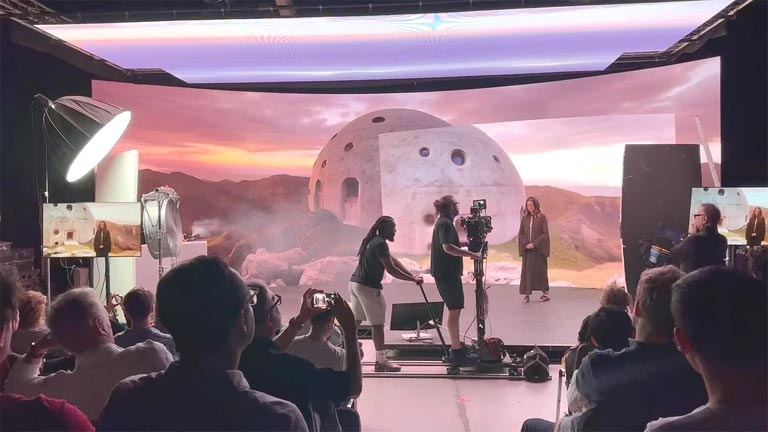
Once upon a time when films are shooted in a natural and outdoor environment. The production and direction team had to build large film sets which were time-consuming, costly, and less durable. A lot of construction materials and manpower were required to build film sets. Also, these sets require regular maintenance and repair. Either you have to capture the scene in the existing set design or you have to make changes according to your movie script.
But when technology comes into human life, it gets involved in everything. The film industry also adopted it and brought the latest advances in film shooting, cameras, lenses, film sets, visual production stages, visual effects, lighting, etc. Now you don’t need to build large and costly film sets to perform a specific scene. It can be done under one visual production staging roof.
Virtual production enables filmmakers to create immersive and realistic scenes by seamlessly integrating physical and digital elements in real time. There is a digital screen and floor that create all the computerized visual effects that you want for your video or film shoot.
How Virtual Production Stages are Revolutionizing Filmmaking
Envisioning the future of virtual production in movie and video making.
Reduce Cost
They reduce the need for costly and time-consuming post-production processes, such as green screen compositing, matte painting, and CGI animation. Instead, filmmakers can see and adjust the final result as they shoot, saving time and money.
Digital Effects
They enhance the creative possibilities and artistic expression of filmmakers, as they can experiment with different lighting, angles, backgrounds, and scenarios without being limited by physical constraints or locations. They can also collaborate with other artists and technicians remotely, using cloud-based platforms and tools.
Enhance the Performance
They improve the performance and experience of actors, as they can interact with realistic and responsive digital elements, rather than imagining them or acting against a blank screen. This can enhance their emotional engagement and authenticity, as well as their physical movements and gestures.
Digital Background and Floor
Digital background and floor virtual production stages are revolutionizing filmmaking. Virtual production stage allows filmmakers to create realistic and immersive colorful environments without traveling or building large sets. They also enable real-time collaboration and creative control over lighting, camera angles, motion control, and visual effects. These stages are transforming the way stories are told and experienced by audiences around the world.
One-site Shoot
This technique enables filmmakers to create realistic and immersive scenes in a virtual environment, which reduces the need for on-site shots and action sequences done in real time, thus reducing the need for reshoots and extensive post-production.
Some of the examples of films and shows that have used virtual production stages are:
The Mandalorian, is a Star Wars spin-off series that uses a 270-degree LED screen to project photorealistic landscapes and environments, creating a seamless blend of practical and digital effects.
The Lion King, a live-action remake of the animated classic that used a virtual reality system to create a fully digital world, where the director and cinematographers could plan shots, scout locations, and direct scenes in real-time.
Avatar, a sci-fi epic that pioneered the use of performance capture and motion capture to create lifelike digital characters and creatures, as well as a virtual camera system that allowed the director to manipulate and view the digital scenes as if they were physical sets.
Virtual production stages are changing the future of filmmaking by enabling filmmakers to create more immersive, realistic, and innovative stories, while also reducing the costs and challenges of traditional production methods. As technology advances and becomes more accessible, virtual production stages will likely become more common and influential in the film industry.




